Ganymede – Facts About The Largest & Most Massive Moon
Jupiter’s Giant Icy Moon
Ganymede is the largest moon in the solar system and is even bigger than Planet Mercury and the dwarf planet Pluto! Ganymede’s discovery in 1610 (along with the other Galilean Moons) played a significant role in the advancement of astronomy and our understanding of the solar system.
Fast Summary Facts About The Moon Ganymede
- Discovered: January 7th, 1610 by Galileo Galilei
- Name: Named after a beautiful mythological prince Jupiter turned into an eagle
- Size: Diameter of 5,268 km (3,273 miles)
- Moon Rank: Largest in the Solar System
- Surface Gravity: 0.146g (14.6% of Earth’s!)
- Orbit: Prograde and Circular
- Orbit Radius: 1,070,400 km
- Orbital Period: 7 days, 3 hours
- Orbital Speed: 10.88 km/sec
- Orbital Inclination: 0.20° (to Jupiter’s equator)
- Rotation: Synchronous (rotates once every revolution so the same side always faces Jupiter – known as tidally locked)
- Density: 1.94 g/cm3
- Surface: Water-ice and rocky material
- Surface Temperature: A frigid mean of -163 °C (between 70 - 150 K)
Read More Interesting Facts About Gigantic Ganymede!
- The discovery of Ganymede, and the other Galilean Moons in 1610, was the first time an object was observed to be orbiting another planet and lead to the understanding that the planets orbited the Sun and not the Earth!
- Like several other differentiated icy moons, Ganymede is believed to be made up of four main layers; a metallic iron-nickel core, a mantle of rock, a salt-water ocean and a shell of mostly ice (and some rock) that maybe 800 km (497 miles) thick!
- Images of Ganymede reveal that the moon has undergone extensive resurfacing since its formation as the surface terrain is a mixture of two distinct types. Dark, heavily cratered areas (believed to be the original surface) cover 40% of the surface with the remaining area consisting of a lighter grooved terrain (younger in age) which forms complex patterns unique to Ganymede. The grooves were likely formed from extensional faults (caused by ancient tidal heating during a possible period of unstable orbital resonance) which released liquid from the subsurface.
- The surface is primarily composed of water-ice, silicate rock material, carbon dioxide and a mixture of other space weathered dark material and compounds.
- Bright rays of impact debris radiate from craters as you would expect of exposed water-ice.
- The Hubble Space Telescope observed in 1996 that Ganymede has a very thin atmosphere composed of oxygen.
- Ganymede is the only moon in the solar system observed to have a magnetosphere (typically only planets have these), but is it entirely enclosed by Jupiter’s magnetosphere.
- The Voyager spacecraft observed that Ganymede has polar caps which are likely composed of water frost due to the uneven distribution of the magnetic field.
- In 2015 Scientists utilizing images from Hubble observed Ganymede’s aurora being influenced by a subsurface salt-water ocean.
- Ganymede is locked in a 1:2:4 orbital resonance with the Galilean moons Europa and Io. Ganymede completes 1 orbit for every 4 that Io does and 2 that Europa completes.
- Ganymede is believed to have formed by the accretion of the gas and dust that surrounded Jupiter after the planet was formed during the Solar Systems formation 4.5 billion years ago.
- The Pioneer 10, Voyager I and Voyager II spacecraft were the first to image Ganymede in detail, with additional observations made during the New Horizons flyby. The first probe to orbit Jupiter, Galileo, made extensive studies of the moon during its 6 encounters, passing within 264 km (164 miles) of the surface!
- A specific mission to study Jupiter’s icy moons the European Space Agency's JUICE mission (JUpiter ICy Moons Explorer) will arrive at Jupiter in 2030 focusing on the (potentially habitable) icy moons of Europa, Callisto and eventually enter orbit around Ganymede!
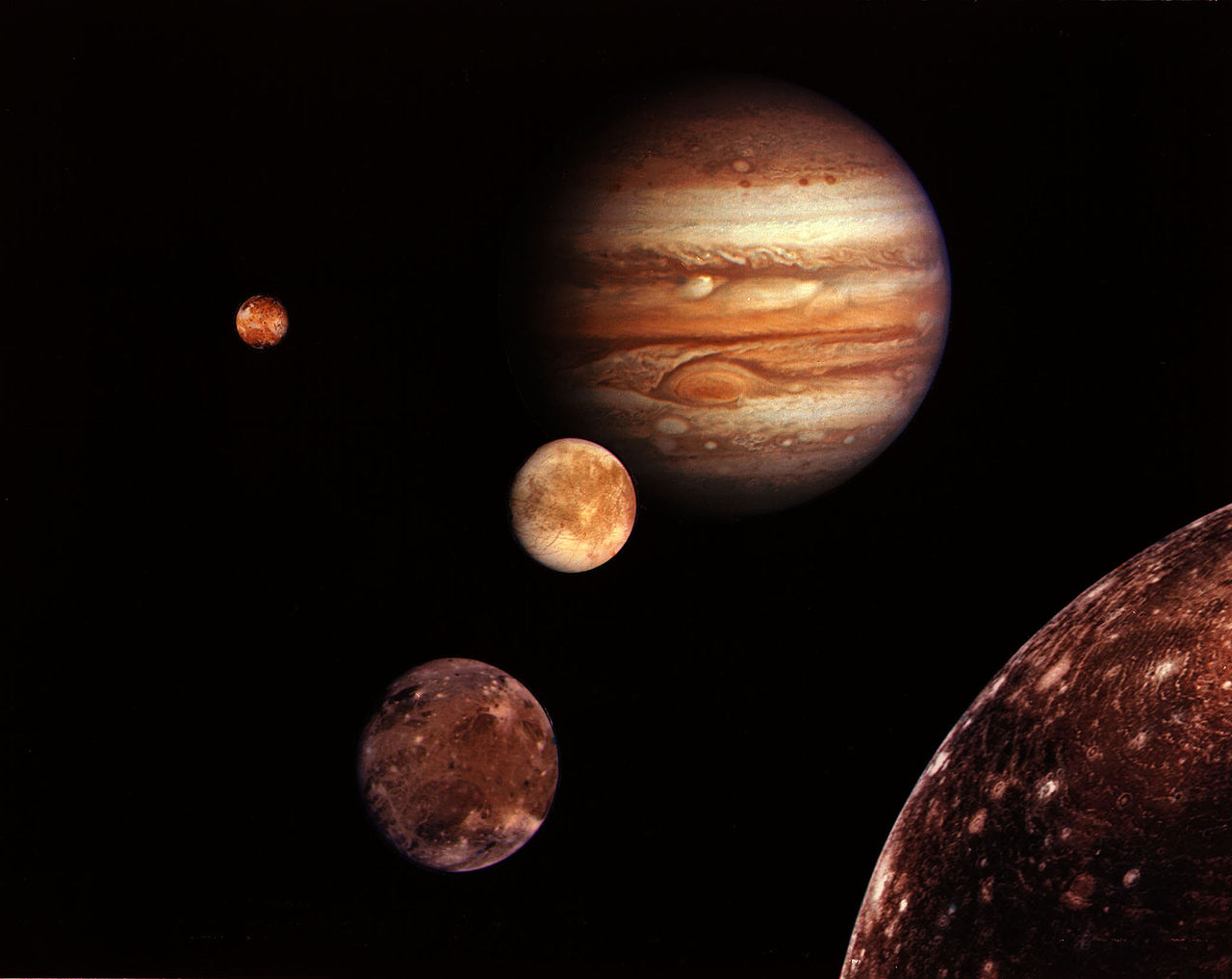
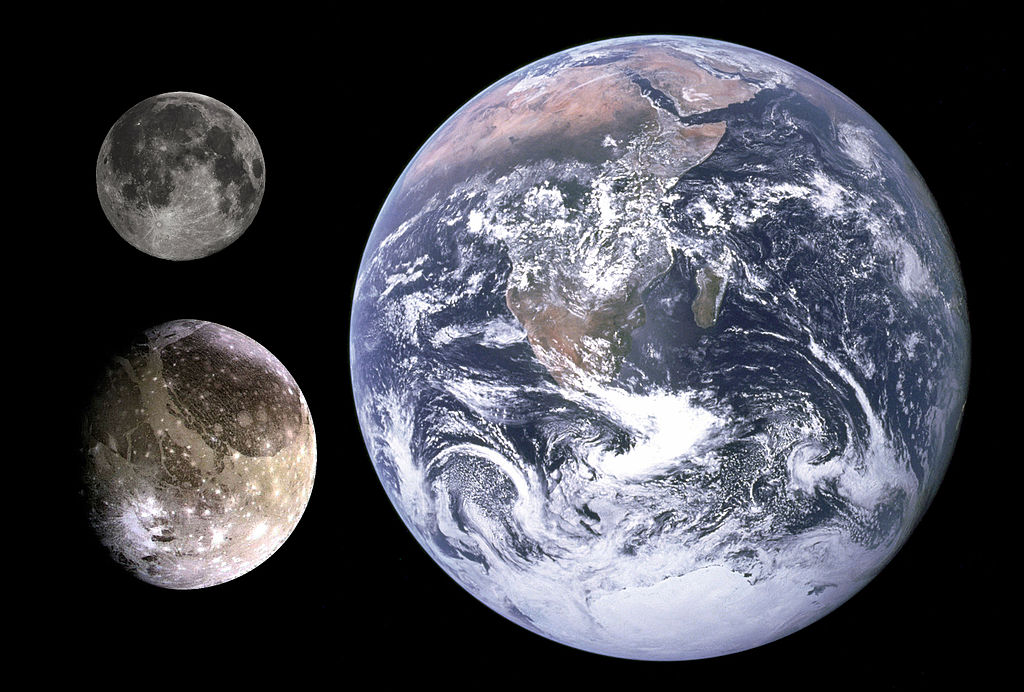
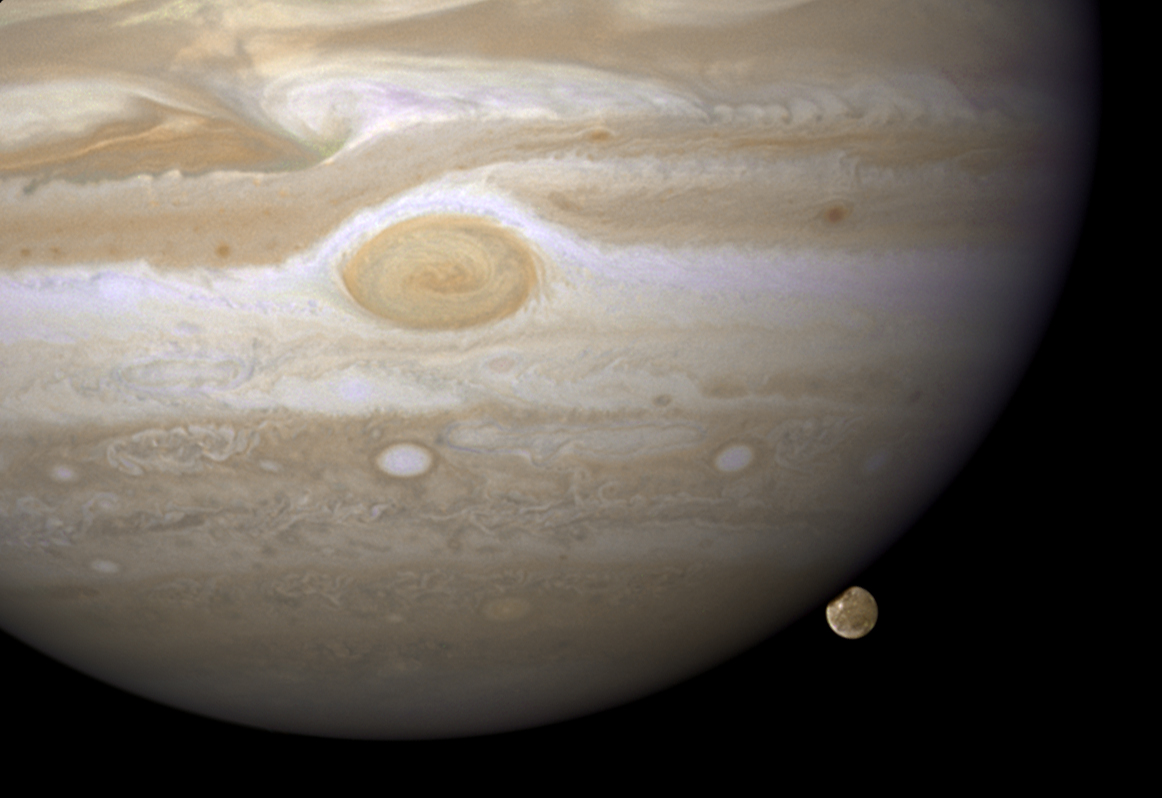
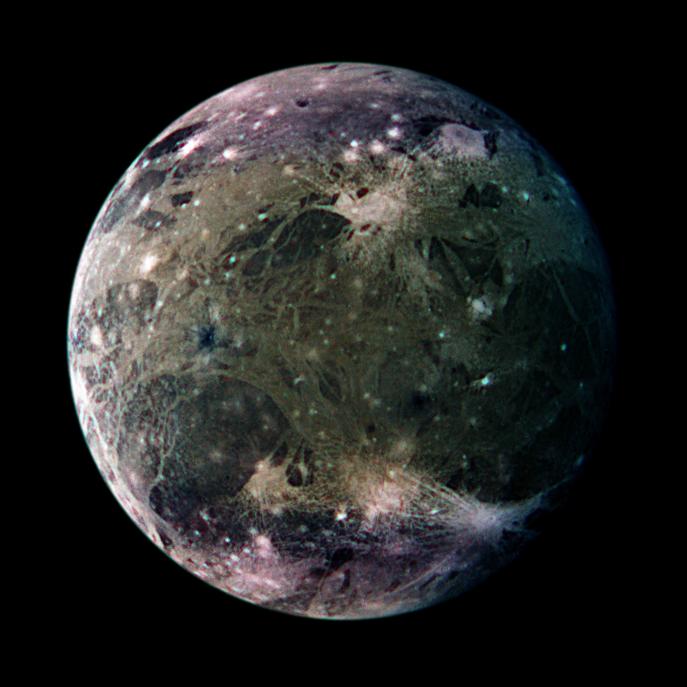
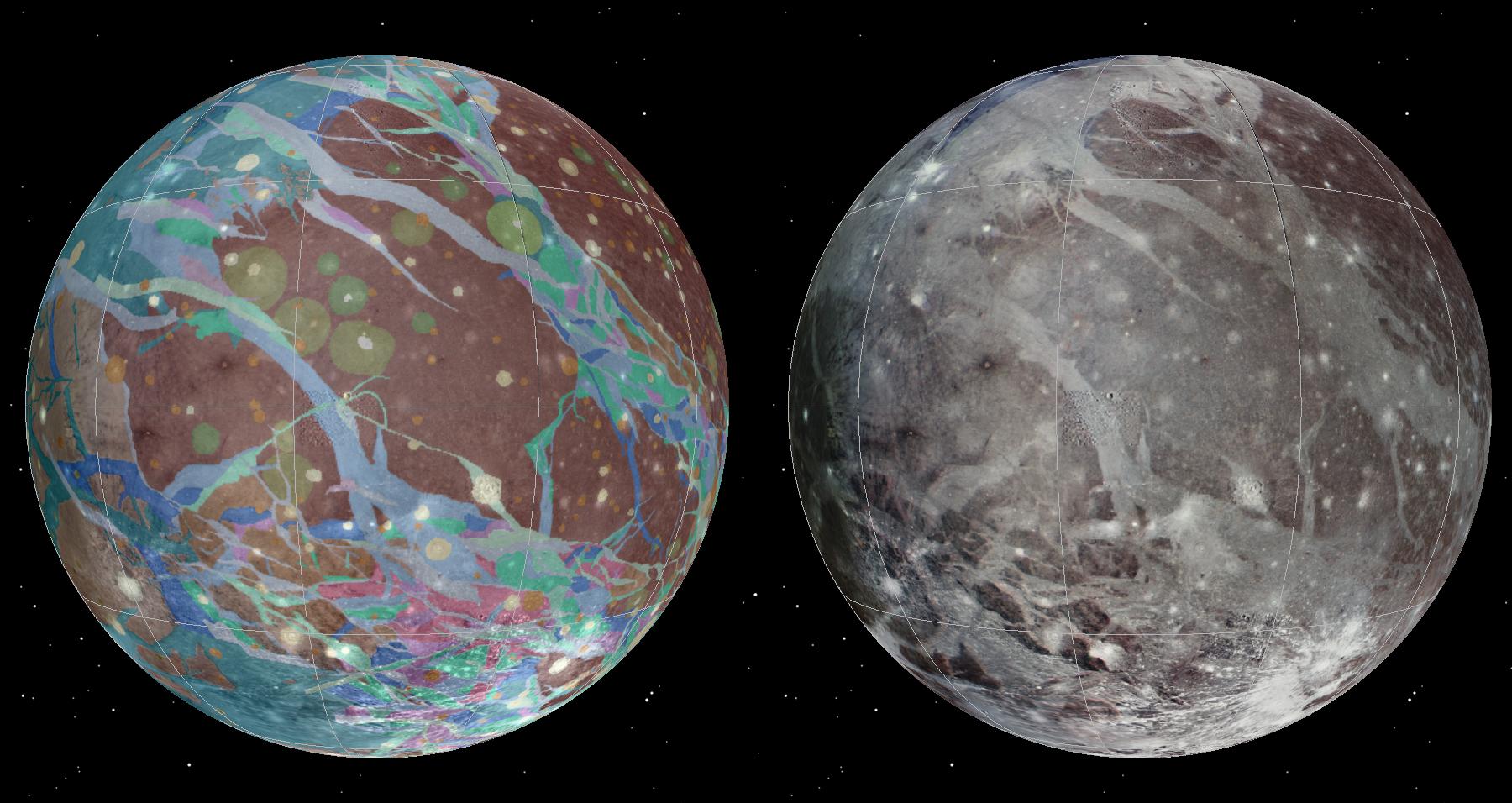
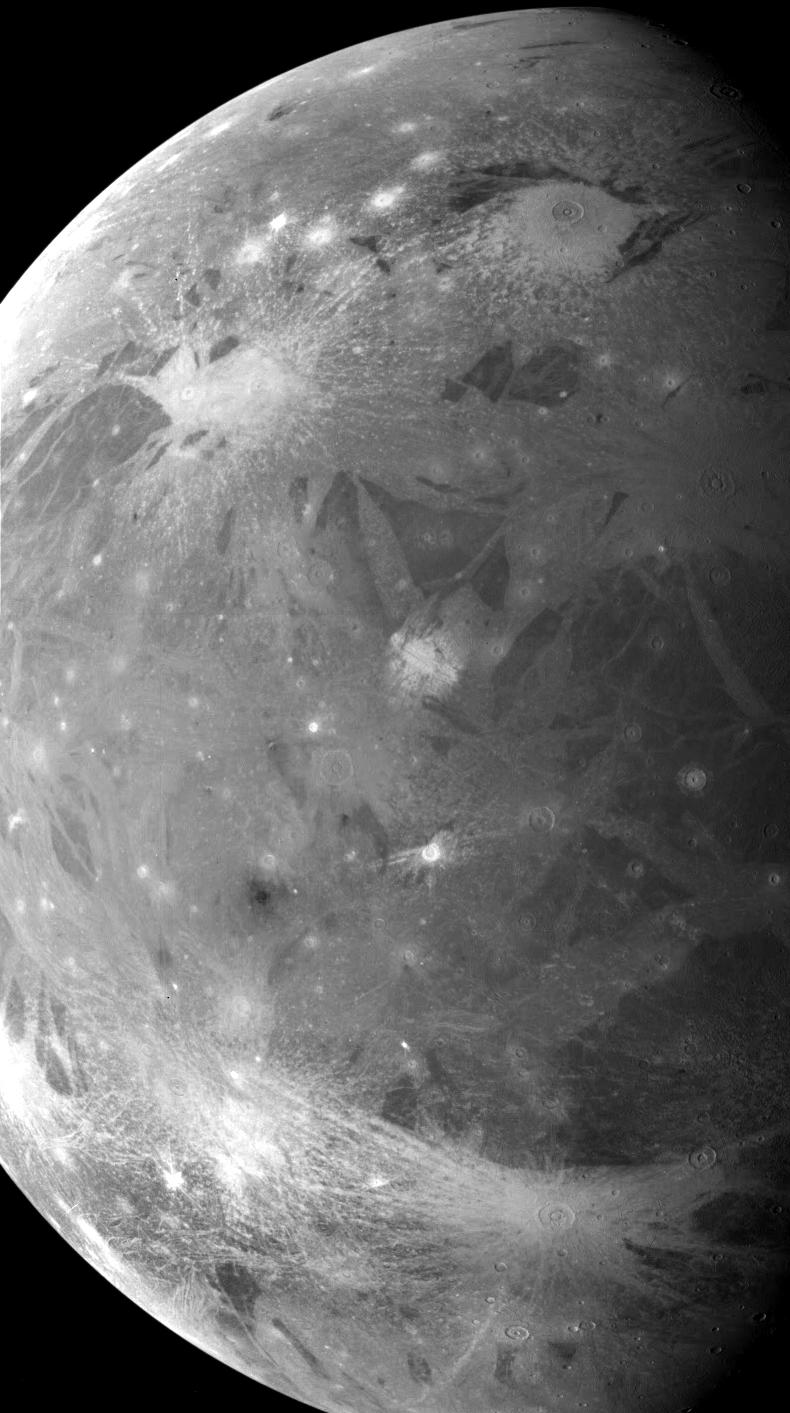
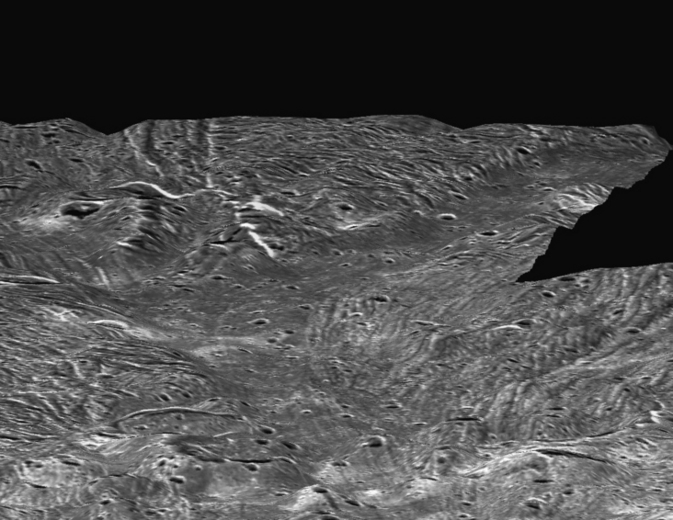
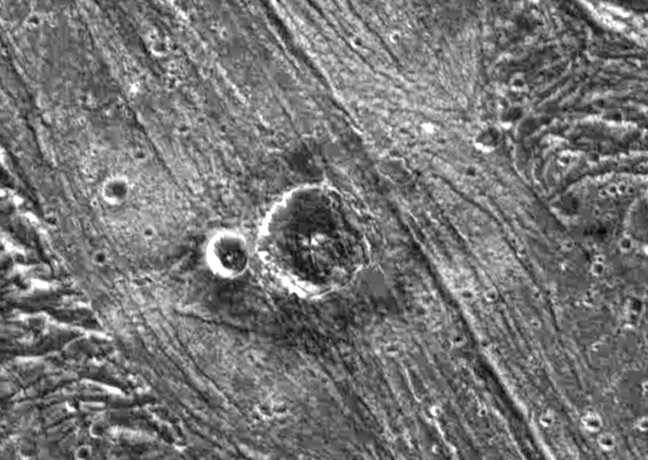
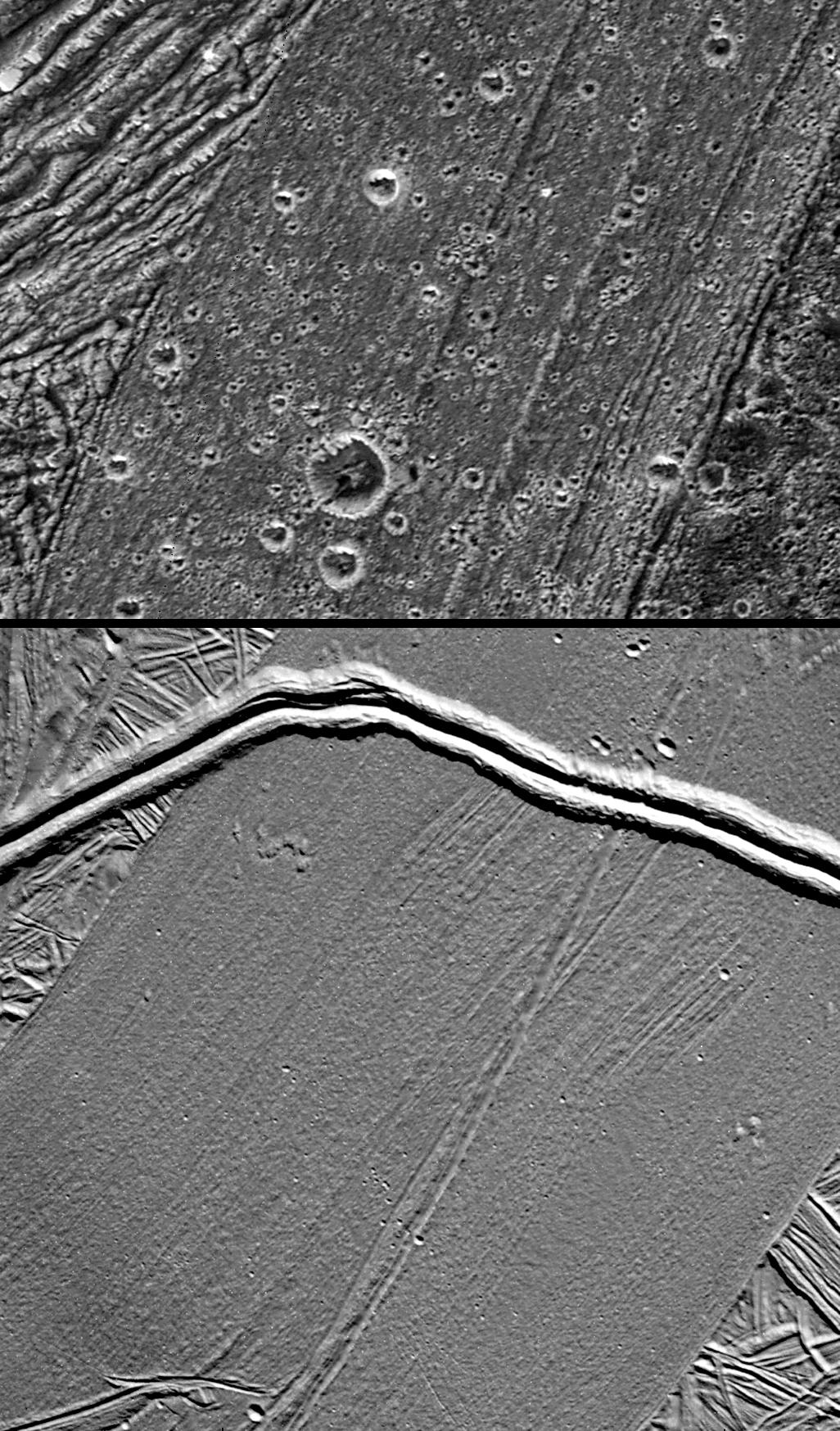
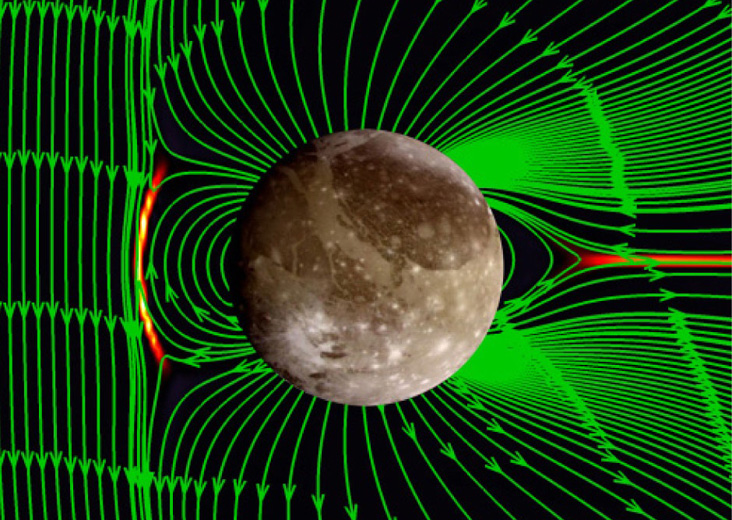
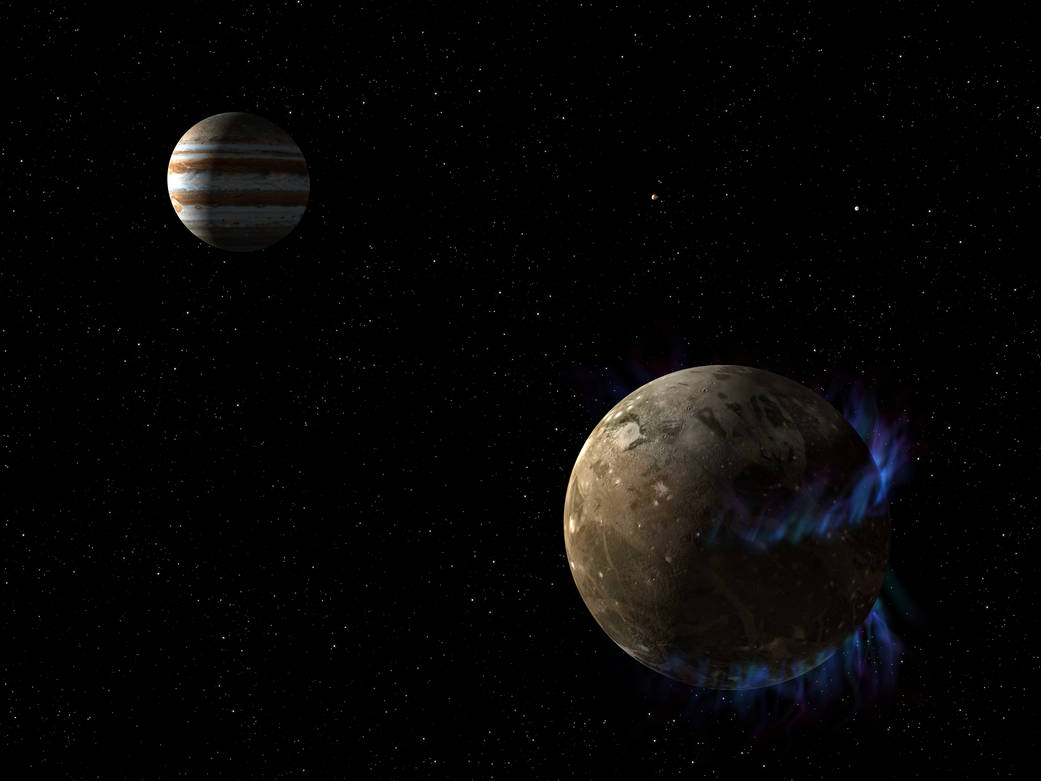
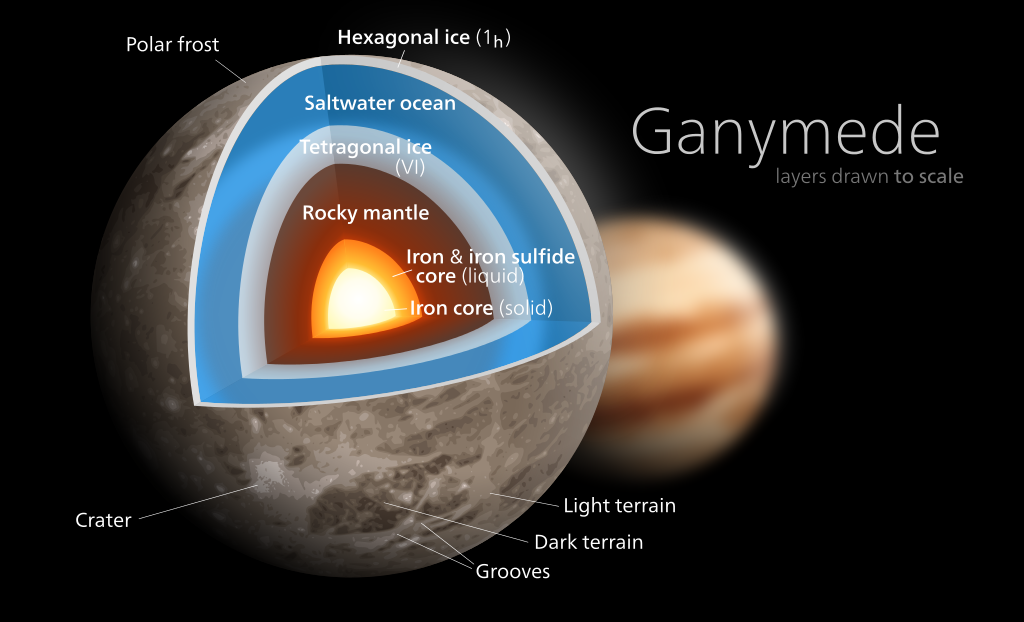
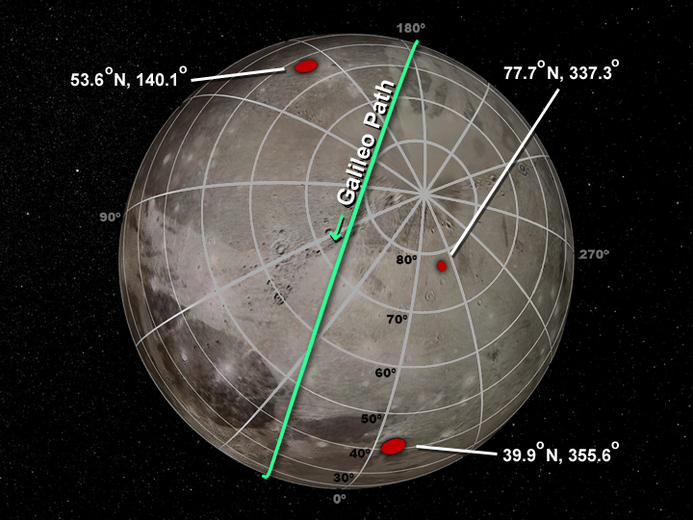
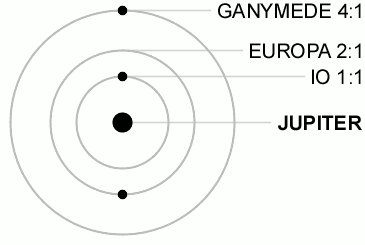
The Galilean Family
Size Comparison
Far Side
Global View
Jupiter moon Ganymede
Dynamic Surface
Ganymede Topography
Nergal Crater
Icy Features
Magnetic Field
Aurora
Ganymede's Internal Structure
Ganymede Lumps
Galilean Moons Resonance


















